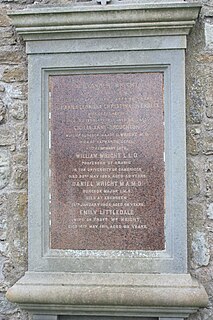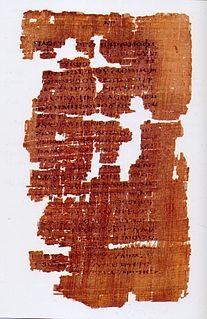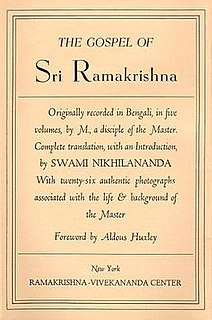Moses of Ingila (fl. mid-6th century) was a Syriac Christian author who translated a number of texts from Greek into the Syriac language.

Greek is an independent branch of the Indo-European family of languages, native to Greece, Cyprus and other parts of the Eastern Mediterranean and the Black Sea. It has the longest documented history of any living Indo-European language, spanning more than 3000 years of written records. Its writing system has been the Greek alphabet for the major part of its history; other systems, such as Linear B and the Cypriot syllabary, were used previously. The alphabet arose from the Phoenician script and was in turn the basis of the Latin, Cyrillic, Armenian, Coptic, Gothic, and many other writing systems.
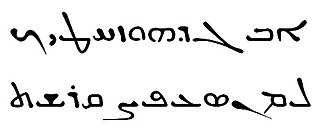
Syriac, also known as Syrian/Syriac Aramaic, Syro-Aramaic or Classical Syriac, is a dialect of Middle Aramaic of the Northwest Semitic languages of the Afroasiatic family that is written in the Syriac alphabet, a derivation of the Aramaic alphabet. Having first appeared in the early first century CE in Edessa, classical Syriac became a major literary language throughout the Middle East from the 4th to the 8th centuries, preserved in a large body of Syriac literature. Indeed, Syriac literature comprises roughly 90% of the extant Aramaic literature. Syriac was once spoken across much of the Near East as well as Anatolia and Eastern Arabia. Syriac originated in Mesopotamia and eventually spread west of Iraq in which it was became the lingua franca of the region during the Mesopotamian Neo-Assyrian period. During the establishment of the Church of the East in central-southern Iraq, speakers of Syriac split into two; those who followed the Eastern Syriac Rite and those who followed Western Syriac Rite. Syriac was the lingua franca of the entire region of Mesopotamia and the native language of the peoples of Iraq and surrounding regions until it was spread further west of the country to the entire Fertile Crescent region, as well as in parts of Eastern Arabia, becoming the dominant language for centuries, before the spread and replacement with Arabic language as the lingua franca. For this reason, Mesopotamian Iraqi Arabic being an Aramaic Syriac substratum, is said to be the most Aramaic Syriac influenced dialect of Arabic, sharing significant similarities in language structure, as well as having evident and stark influences from other ancient Mesopotamian languages of Iraq, such as Akkadian, Sumerian and Babylonian. Mesopotamian Arabic dialects developed by Iraqi Muslims, Iraqi Jews, as well as dialects by Iraqi Christians, most of whom are native ethnic Syriac speakers. Today, Syriac is the native spoken language of millions of Iraqi-Chaldo-Assyrians living in Iraq and the diaspora, and other Syriac-speaking people from Mesopotamia, such as the Mandaean people of Iraq. The dialects of Syriac spoken today include Assyrian Neo-Aramaic, Chaldean Neo-Aramaic, and Mandaic.
One surviving letter, preserved in British Library MS no. 17,202, prefaces the writing we call Joseph and Aseneth . Around 550 an anonymous individual, probably a monk, found a very old book in Resh'aina, in the library belonging to the line of bishops who had come from Aleppo. This ancient writing (Joseph and Aseneth) was in Greek, a language with which this individual was less familiar than his native Syriac. Suspecting that it contained a "hidden meaning," he wrote to his friend, Moses of Ingila, asking him to provide a Syriac translation along with an explanation as to its hidden meaning. Moses of Ingila obliges with a Syriac translation which he prefaces with a letter. [1] According to Angela Standhartinger, he explains the story "as an allegory of Christ's marriage to the soul". [2] An English translation of this letter can be found in Simcha Jacobovici and Barrie Wilson, The Lost Gospel [3] along with an English translation of the Syriac text of Joseph and Aseneth.
Joseph and Aseneth is a narrative that dates from before the 6th century CE. It seems to relate the romance, marriage and children of the Israelite patriarch Joseph and his Egyptian wife Asenath. Some have regarded it as a Jewish midrash or elaboration on the story in Genesis. Others question this interpretation partly because of its provenance, language, symbolism (Eucharistic) and covering letter which appear to indicate a Christian context.
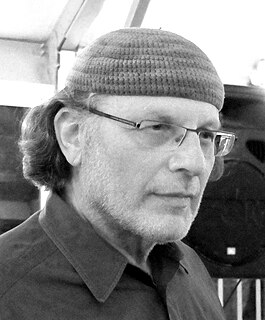
Simcha Jacobovici is an Israeli-Canadian film director, producer, freelance journalist, and writer.
Barrie A. Wilson is Professor Emeritus and Senior Scholar, Humanities and Religious Studies, York University, Toronto, where he has taught since 1974. Throughout the 1990s he was Chair, Religious Studies, Atkinson College, York University. He previously taught Ancient Philosophy and Logic at Saint Louis University in St. Louis, Missouri from 1969 to 1974.



